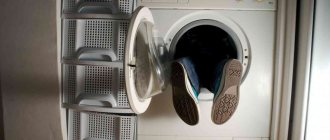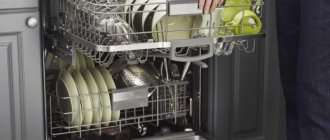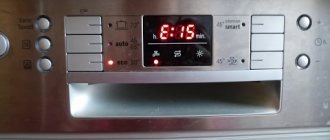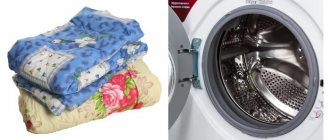The dishwasher is a fairly important element in the kitchen. Without it, housework will take much longer. After all, there is no need to waste time on manual washing of dishes, which are also very difficult to wash.
You can read more about the meaning of purchasing a dishwasher here.
But, as in any business, there are pitfalls here. For more complete and long-lasting operation, you need constant care of your dishwasher.
How often should you wash your dishwasher?
Prevention is the key to stable operation of equipment. If you do not take care of it, accelerated scale formation, the appearance of unpleasant odors, and premature wear are possible. Recommended care schedule:
- After each wash, wipe the sealing rubber and the inner surface of the chamber with a dry cloth.
- Wipe down the control panel and door weekly with a damp sponge and soapy water. The filter also needs to be washed with water.
- Have a monthly “bath day” using citric acid.
Women are especially welcome to work as a dishwasher. Housewives love to cook and treat their family to pickles, but then they have to sort out mountains of dirty dishes. Men are unpretentious eaters and are not inclined to use extra plates, so for them a dishwasher is an ordinary kitchen device, and not a panacea for routine. So it is women who sound the alarm more often than others when using this technique. Having received an assistant at their disposal, the ladies are in no hurry to understand its structure - pump, hose, drain... Phew, how uninteresting! Therefore, any breakdown becomes for them:
- a - surprise;
- b - a disaster.
There are many ways to solve and even prevent possible problems. The secret to success lies in regularly washing the internal surfaces and cleaning the filters.
Conclusions and useful video on the topic
Running a new dishwasher for the first time in “idle” mode is a responsible task. You are given the opportunity for the first time to check both the quality of its installation and the operation of its devices.
We present to your attention a video dedicated to Bosch dishwashers. You will see the operating principles of different types of machines, get an idea of the internal structure and operating procedure of the unit.
There are a great variety of models produced by the famous Bosch brand. And each has its own characteristics. Our task is to awaken your interest in this technique and in the instructions that describe its capabilities and nuances of operation.
How to care for PMM?
Rules of care
- Equipment should not be idle. Regular use of the device prevents the formation of bacteria - no matter how you wash the camera, microscopic food remains remain in it.
- During preventive measures, the chamber must be empty.
- Check the rotating nozzles for blockages and clean them if necessary. Clogged nozzles interfere with the normal flow of water - the dishes will not be washed properly.
- All parts of the PMM must be cleared of debris. To do this, use tweezers, toothpicks - in other words, something thin and pointed. If you use a metal tool, try not to leave scratches on the surface of the device.
- Wipe down doors and gaskets. There are places in the chamber that are washed worse than others during operation. They need to be thoroughly wiped with a cloth and special detergent. You can reach hard-to-reach areas with a toothbrush.
- Clean the bottom of the door—debris can accumulate in this so-called “dead spot.” Particularly thorough cleaning will be required here.
- Clean the bottom of the machine near the drain. To do this you will have to get baskets, because you need free access. Use caution - clean carefully. There may be fragments of broken dishes and other solids in the drain.
- Remove scale using one of the recommended products - special or homemade, such as vinegar and lemon juice. This procedure is performed last. The PMM is launched without dishes.
- Wash the front area with a sponge and a mild detergent. Pay special attention to the panel, handle and tabs.
- Refill your machine with fabric softener monthly. However, it is not necessary if you are using a water softener. In addition, rinse aid is contained in a number of detergents - read their composition.
- Clean the plastic elements with a brush. Use liquid soap if necessary.
Internal cleaning of PMM
To clean the inside of the machine, double caution is required:
- Disconnect the device from the power supply.
- After unscrewing the screws, remove the sprinkler and other elements. Try to remember the sequence of actions - you can even take a photo so you don’t miss anything during assembly. Store the parts in a safe place in the order in which they are removed.
- When finished cleaning, install the parts in reverse order. When tightening screws into plastic, do not use excessive force.
- Now you can connect the machine to the mains.
How to get rid of mold?
Fungus and mold cannot appear with the care described above. Their occurrence indicates a violation of the service rules. You should immediately begin to exterminate microorganisms and take measures to prevent their proliferation. Recommended action plan:
- Clean the inside of the appliance with bleach in a ratio of 0.5 cups per 1 liter of water;
- Wipe the chamber with a solution of ammonia in a ratio of 1/4 cup per liter of water;
- Turn on rinse mode.
To prevent the formation of mold, it is recommended not to close the machine door after the next wash.
Important! Bleach should be used with extreme caution - it is quite caustic. If the body is made of stainless steel, their use is prohibited. Bleach should not be used in combination with other chemicals.
How to get rid of rust?
Rust is already a direct threat to the performance of the elements affected by it. If corrosion stains appear on the basket, it is better to change it. You can also use sealant paint. In any case, it is important to understand what causes corrosion. It can be caused by high iron content in water. This may be due to a natural feature - and there is nothing you can do about it - or to rusty pipes. In any case, it is recommended to install special filters.
Which program to choose
The number of modes provided by Bosch machine manufacturers allows you to select an algorithm for each case, taking into account the necessary factors, such as:
- washing method;
- duration;
- temperature;
- volume of resource consumption.
Automatic mode can speed up and simplify the process of choosing the type of washing ; otherwise, you should proceed from the type of dishes, their quantity and degree of contamination.
If the dishes have traces of burnt food, soot or heavily dried areas, you must select “intensive” . For dishes with light and medium soiling, the “1 hour” and “quick” modes are suitable. If you just need to rinse the dishes, it is recommended to choose the “eco” program . The additional delay function may be useful for those who are used to planning their time.
The reliability and durability of the machine directly depends on the accuracy of the choice of a particular program. Before use, you should carefully read the recommendations for choosing the type of washing and follow them, in order to avoid sudden breakdowns, additional costs and hassle.
Subscribe to TechnoCouncil on social networks so you don’t miss anything:
How to wash PMM?
Special liquids are used for dishes in the machine, but what should you use to wash the appliance itself? The same products will do - they contain substances that clean not only kitchen utensils, but also the dishwasher compartment to a shine. There are three forms of release of special equipment:
- Pills. The capsule contains everything you need for complete care.
- Powders. Not as convenient as tablets - the user needs to measure out the dose per cycle. But this option is cheaper than the previous one.
- Gels. The composition is identical to the powder, they differ only in the gel-like consistency.
In addition to the main arsenal, it is also recommended to use formulations of narrowly targeted action:
- Rinse aids. Added towards the end of washing dishes. It is poured into a special compartment, and the machine itself measures the required dose.
- Freshener. Helps prevent unpleasant odors. It is mounted in the upper basket. One air freshener is enough for an average of 70-80 cycles.
- Special salt for PMM is used to prevent scale.
Rules for loading dishes
The Bosch dishwasher operating instructions indicate several rules that must be followed when loading dirty dishes. The fact is that the main working element in the device is represented by rocker arms that spray water onto the utensils. If the appliances are placed incorrectly, they will create an obstacle, and therefore the quality of washing will sharply decrease.
We suggest you familiarize yourself with How to iron on iron-on stickers and rhinestones: getting ready for the holiday
First of all, you need to make sure that a particular cutlery is dishwasher safe. The list of prohibited products includes:
- wooden objects;
- tin or copper products;
- antiques;
- hand-painted cutlery;
- glasses and containers made of plastic;
- sponges for washing dishes, textile items;
- thin-walled cutlery.
An important requirement is the correct installation of cutlery.
- Before placing plates or other items into the machine's container, remove all large dirt (bones and food debris) from them.
- All items must be securely installed in trays. Small items are best washed by hand.
- Spoons and forks are placed with the concave side down. Knives and other sharp objects are placed in the compartment intended for this purpose.
- After finishing washing, unload the bottom tray first.
There is a basic rule that applies to all Bosch dishwashers. In the chamber of the unit there are rocker arm sprayers, through the nozzles of which liquid is poured onto the dishes.
So, cups and plates in boxes should be placed so that their presence in close proximity to the sprayers does not interfere with their rotation. The opening valve of the detergent cuvette must not be blocked.
Correct loading of dishes into the dishwasher is really important, since the quality of work for which this unit was purchased depends on it
Before loading kitchen utensils into the compartment, make sure that all items are dishwasher safe. Kitchen and dining utensils that cannot withstand high temperatures are best washed by hand. We are talking about objects covered with glaze, porcelain, antiques and rarities, as well as products made of bronze, pewter, aluminum, brass and copper.
Make sure large food scraps are removed. If the machine has a soaking option, then it can be used to wash large pots. If there is no soaking, remove food debris from the surfaces with a brush. It is bought in hardware stores.
To increase the washing efficiency, in full accordance with the instructions for the brand’s machines, you can first hold cutlery and other utensils under hot water. The grease on the surfaces will become wet and will be easier to wash off. For proper placement of dishes inside the chamber, loading boxes (baskets) are provided.
Using telescopic guides and the Rackmatic system, the boxes can be moved and pulled forward to make it more convenient to place everything that needs to be washed in them. Even if the boxes are completely filled, you don’t have to worry: they won’t tip over.
The dishes are placed inside the chamber in boxes located on two or three levels depending on the model of the dishwasher being loaded.
Depending on the number of mobile and folding elements, three types of boxes are distinguished:
- Vario;
- Vario Flex;
- Vario Flex Plus.
The last boxes on this list are equipped with additional protection for fragile dishes that need careful handling. In particular, 12 glasses with high stems are placed on additional shelves of the lower box. It turns out that in these models the total number of simultaneously washable glasses can reach 18 pieces.
Depending on the specific dishwasher model, utensils can be loaded in two or three levels. The third level is designed to accommodate cutlery, as well as items of non-standard sizes.
Dishes placed in the boxes of a Bosch dishwasher are reliably protected from mechanical damage: the rounded ends of the fixing grids are one of the manifestations of such protection
The Rackmatic system helps to correctly position the boxes in height. After all, proper loading of dishes allows moisture to wash it as evenly as possible from all sides. To secure glasses and cups, you need to use the holders designed for them.
By manipulating the holders, you can make the basket deeper or adapt it to accommodate large items: pots and stewpans.
If the model has boxes of the third upper level, then cutlery is washed in them, which are placed in this kind of tray compactly and neatly
The procedure for using baskets, changing their location and types of loading are contained in the instruction manual for the specific model you have chosen. We recommend that you study this part as carefully as possible.
“Homemade” cleaning recipes
If you do not use the above substances, the internal elements of the device will eventually become covered with rust, fungus, and mold. Along with store-bought ones, you can use “homemade” products. For the mixture you will need:
- Soda - 200 g;
- Peroxide - 1.5 tbsp. l.;
- Essential oil - 10 drops.
Balls are made from the resulting mixture and placed on the shelf below.
Mix 400 g of vinegar and a spoonful of washing gel. This composition is placed on the top shelf and the washing program is started. You need to use the vinegar mixture occasionally, otherwise a vinegar smell that is difficult to remove will stick to the car.
And yet, experts recommend using special equipment; fortunately, there are plenty of them on store shelves. For example, Finish Rinse or Calgonit Fusion Power. After pouring the dose into the appropriate compartment, turn on the wash for at least an hour and a half. The temperature should be 60 °C.
Maintenance is one of the conditions for safe operation
Why wash something that is meant to be washed? Only short-sighted people think this way. Any equipment requires maintenance, and for dishwashers it consists of timely cleaning and cleaning of surfaces. By spending just a few minutes a day, you can extend the life of your assistant by years. Safety of operation depends on proper care:
- Do not load dishes with leftover food;
- Place plates and other items according to instructions;
- Choose a suitable program;
- After completing the process, do not close the door tightly - let the condensate leave the washing chamber;
- After each wash, wipe the sealing rubber and check the cuvette to see if there are any undissolved powder residues left in it.
Important! To wash dishes in the PMM, use only special detergents, not ordinary liquids. The dishwasher sprays water in all directions; thick foam must not form in it.
Caring for dishwashers of different brands - are there any differences?
All dishwashers are designed the same, so caring for them is no different. Regardless of whether you have Bosch, Siemens (Siemens) or Indesit, they need to be given the same attention. The only nuance is the case material. As mentioned above, bleach is contraindicated for stainless steel.
What to do before cleaning the dishwasher?
What should you do before cleaning your dishwasher?
Before cleaning the dishwasher:
- Check that the water supply hose is shut off.
- Unplug the device from the outlet.
- Remove the baskets.
- Remove the blades.
- Remove large particles of food that have stuck to the walls and doors of the unit.
To clean your dishwasher at home, prepare the following:
- rags;
- sponges;
- brushes with soft bristles;
- old toothbrush;
- buckets, basins;
- cleaners.
Possible problems
Neglecting maintenance rules can cause various problems in addition to mold and unpleasant odors. Clogged or improperly filled detergents can cause the following problems:
- Water does not enter the machine. The reason is a clogged intake valve.
- Poor quality of washing. The reason is a lack of detergent composition or a clogged sump filter.
- Water does not drain. The reason is a clogged strainer or hose.
- White streaks remained on the dishes. There is not enough salt - check the dispenser.











